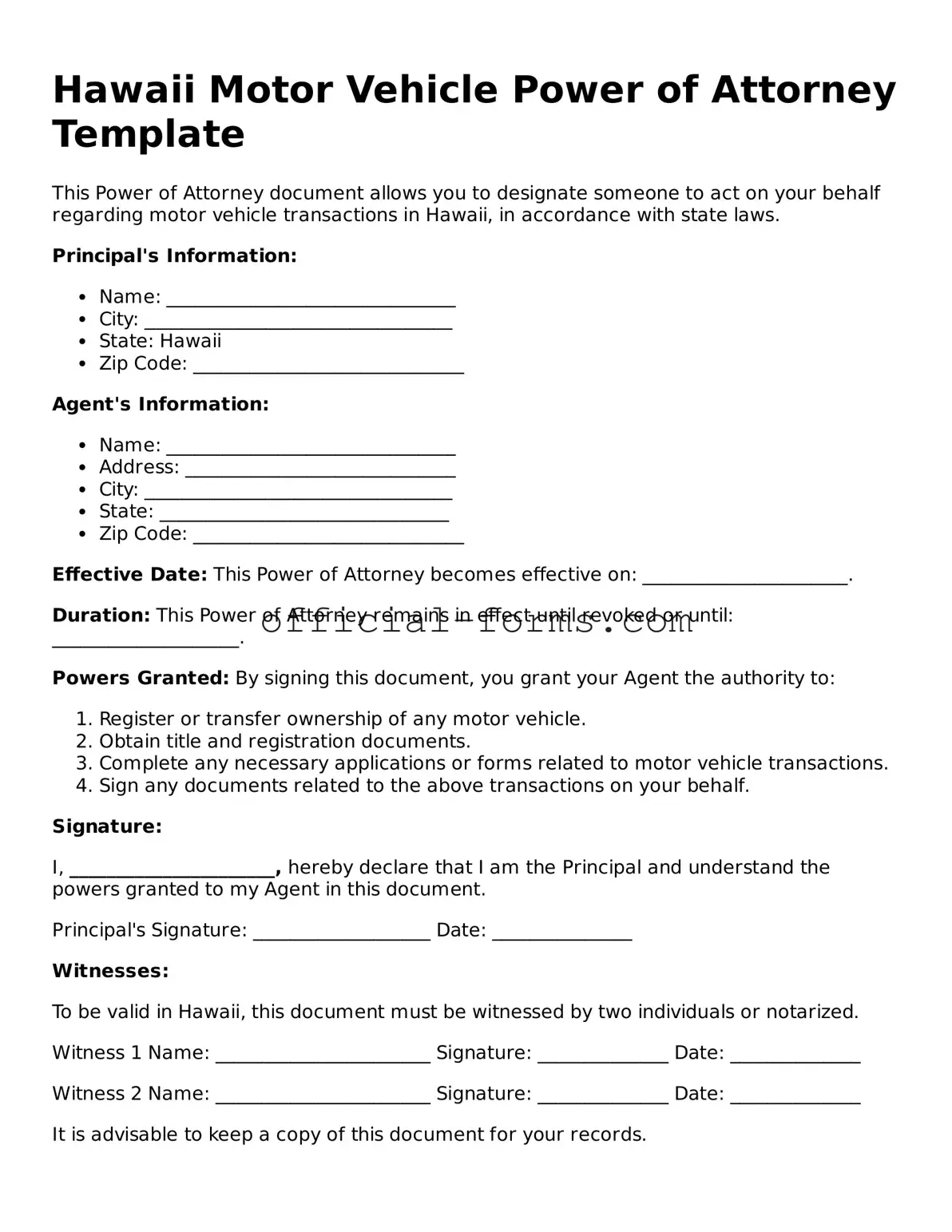In the picturesque state of Hawaii, where the sun meets the ocean and the spirit of Aloha thrives, understanding the Motor Vehicle Power of Attorney form is essential for vehicle owners. This form serves as a legal document that empowers one individual to act on behalf of another regarding motor vehicle transactions. Whether you’re selling a car, transferring ownership, or handling registration matters, this form simplifies the process, allowing a trusted person to manage these tasks seamlessly. The document typically requires the signatures of both the principal and the agent, ensuring that the authority granted is both clear and legitimate. Moreover, it’s crucial to provide specific details about the vehicle involved, such as the make, model, and Vehicle Identification Number (VIN). By utilizing this form, you can ensure that your vehicle-related affairs are handled efficiently, even if you are unable to do so personally. Understanding its importance can save you time and hassle, allowing you to focus on what truly matters while ensuring your vehicle transactions are in capable hands.
